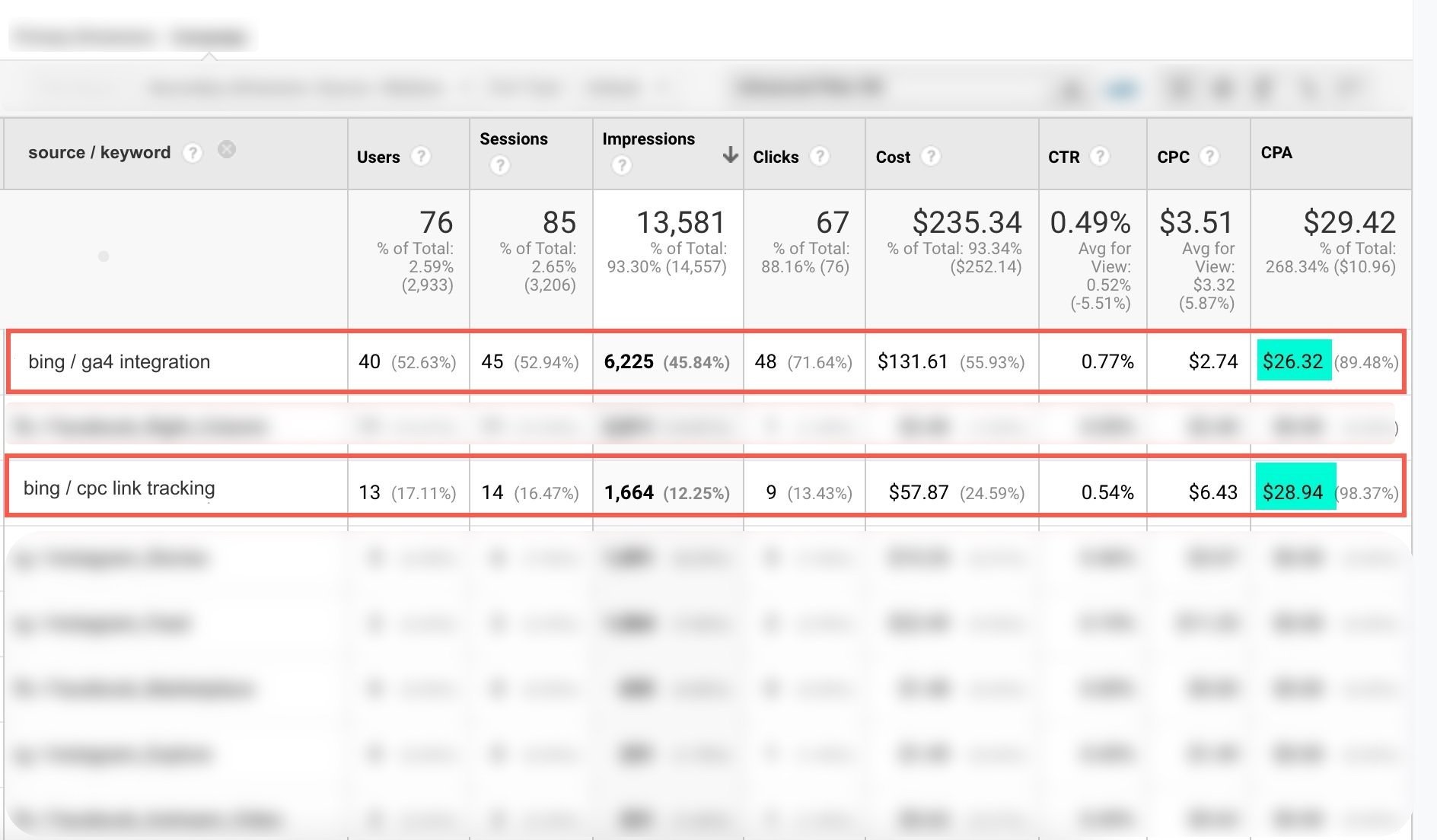New Bing Ads Google Analytics Integration
We’re excited to announce the release of our new Bing Ads (Microsoft Ads) integration for UTM tagging and cost data imports, which allows you to measure Bing Ads conversion CPL and ROAS on the network and keyword breakdown in Google Analytics.
Our new integration features dynamic {Network} and {keyword:default} values, similar to our dynamic values to measure CPL and ROAS on the Facebook Ads placement breakdown in Google Analytics, giving you more granular insights into your Bing Ads performance.
How the Bing Ads Data Connector Works for UTM Tagging
EasyAutoTagging processes the URL parameter and pushes it to the final URL suffix on the ad level according to your Bing UTM profile definition when using the Bing Data Connector.
To build your UTM Profile, you have the option to use static values such as campaign name or ad ID, as well as custom values like bing or cpc. These static and custom values are hardcoded in the final URL suffix on the ad level, ensuring reliable tracking and analysis.

By using hardcoded values, you can optimize tracking in Google Analytics and ensure that data is properly pushed to data lakes such as Snowflake or Big Query. This minimizes the possibility of values failing to resolve on click, providing accurate and consistent data for your marketing analysis.

With EasyAutoTagging’s Bing Ads integration and advanced UTM profile customization options, you can confidently track and analyze your campaigns, and make data-driven decisions to improve your ROI.
Measuring Bing Ads Conversions in Google Analytics
In addition to using static and custom values in your UTM profile, EasyAutoTagging’s Bing Ads integration also allows you to use two dynamic values: {Network} and {keyword:default}.
By utilizing these dynamic values, you can measure cost, cost per lead, and return on ad spend at the network and keyword level in Google Analytics.
Since {Network} and {keyword:default} only resolve on click, our system can pull click-based performance data and join it with Bing Ads cost, impression, and click data. This is done through a process we call reverse data mapping, which allows you to track and analyze your Bing Ads campaigns in Google Analytics at a granular level.

With EasyAutoTagging’s advanced tracking and analysis capabilities, you can gain valuable insights into the performance of you.
Conclusion
Ready to start measuring your Bing Ads CPL and ROAS in Google Analytics? Learn more about our Bing Ads integration and take your advertising performance tracking to the next level.
At EasyAutoTagging, we’re always working hard to develop new features and integrations to improve our platform. If you have any questions, feedback, or feature requests, don’t hesitate to let us know in the comments below.
And if you’d like to stay up-to-date on the latest changes and updates to EasyAutoTagging, head over to our Feature Updates page.
Best regards,
The EasyAutoTagging Support Team
Leave a comment